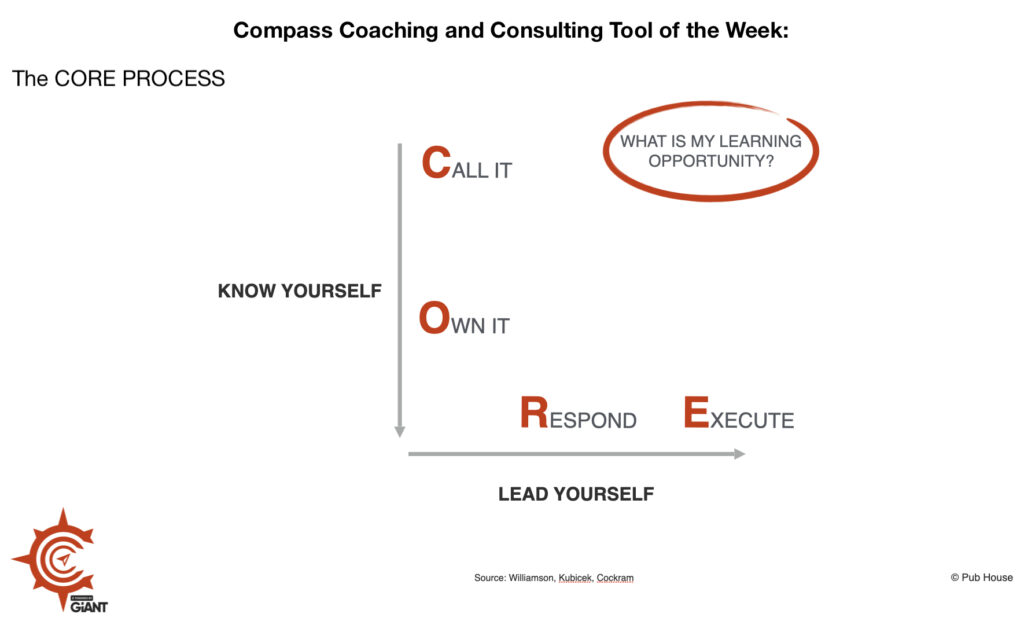In our leadership journeys, it is common for us to encounter challenges that may be inadvertently neglected or postponed due to the demands of our roles. To proactively cultivate our leadership “core”, it is essential that we engage in a reflective process that begins with the pivotal inquiry: “What leadership challenges am I currently facing?” These challenges can be likened to metaphorical speed bumps that, if ignored, could lead to future regrets.
We previously likened the core muscles of an athlete which are crucial to the over all development and performance of a successful athlete to the core strengths of a leader—the development of which is also crucial to a leader’s performance and overall success.
Here, the term “CORE” is employed as an acronym to navigate a reflective process, and it encompasses four key steps:
- Call it: The initial step involves identifying, naming and articulating the specific issue or leadership challenge we are facing. This act of naming the issue serves as a catalyst for open dialogue and collaboration, inviting others to partake in the resolution process. (There is much more to the power we are given by “naming” something or identifying issues correctly, which I will address in a future offering.)
- Own it: Ownership of the challenge is the next phase, where introspection and external feedback converge to illuminate the root causes. This stage is grounded in the concept of self-awareness, a cornerstone of emotional intelligence as described by Daniel Goleman. It requires an honest assessment of one’s areas of conscious incompetence and a willingness to understand one’s behavioral patterns and motivations.
- Respond: With a comprehensive understanding of the challenge, the focus shifts to formulating a response. This involves devising a strategic plan that addresses the issue with concrete steps. The response phase echoes the principles of goal-setting theory, as outlined by Edwin Locke and Gary Latham, which emphasizes the importance of setting specific, challenging, and attainable goals. Accountability mechanisms are integral to this stage, ensuring that there is a support system to encourage and monitor progress. Who will be engage for the necessary accountability and support to ensure completion of the set goal(s)?
- Execute: The final and decisive step is the execution of the plan. A well-conceived strategy is futile without implementation. Execution demands action and is often the most challenging part of the process. It is crucial to communicate clear deadlines and milestones to peers or mentors involved in the leadership journey. This step resonates with the teachings of strategy execution experts like Larry Bossidy and Ram Charan, who stress the significance of turning plans into actions.
This tool can be used in a variety of ways. It can be used for our own personal development. It can be used during employee review processes. It can be used in coaching. It can be applied to team performance and more.
By consistently applying the “CORE” Process and adopting it as a communal tool within teams, families, or organizations, a shared language and framework for addressing leadership challenges are established. This practice encourages regular discussions about current leadership hurdles, the stages of the core process each individual is navigating, the chosen responses, and the actions taken. Such a collective approach promotes a culture of continuous growth and mutual accountability, which is essential for effective leadership development.

